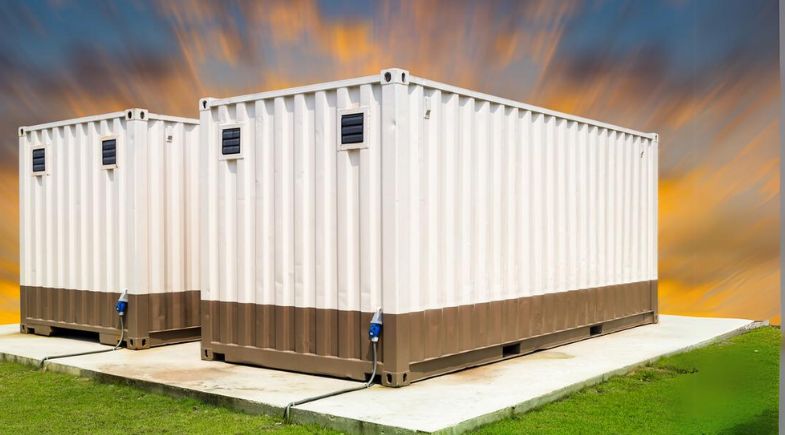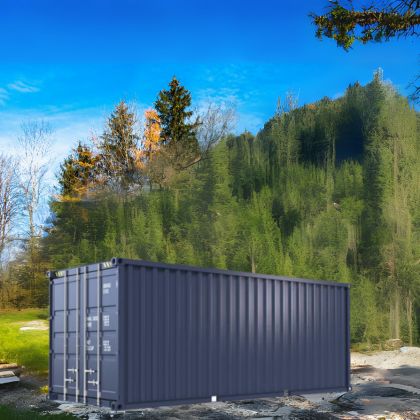
Shipping containers are the big metal boxes you often see on large ships, trains, or trucks, moving all sorts of goods around the world. They’re made to be tough and protect their contents from harsh weather during their long journeys.
But a question that often comes up, especially with the growing trend of turning these containers into homes, is: Are they completely airtight?
In this guide, we’ll explore just how airtight they are, their benefits, and other details.
Are Shipping Containers Airtight?
While shipping containers are designed to be quite sealed off from the outside, they are not 100% airtight. However, with some modifications, their airtightness can be significantly improved
They have small vents along their top edges to let a little air in and out. This helps prevent water from building up inside, which can happen when there’s a big difference in temperature or humidity inside and outside the container.
Refrigerated containers, used for transporting cold items, are made to be more airtight because they need to keep a very steady temperature.
What is Airtightness in Shipping Containers?
Airtightness means making a space so sealed off that air can’t easily get in or out. Creating an airtight environment involves understanding how air moves and how to control it. It’s all about balancing the air pressure and temperature inside and outside the container. Having an airtight container is great for protecting goods from moisture, dust, and pests. It also helps in maintaining the quality of sensitive items like electronics or food.
Factors Affecting Airtightness

- Container Condition: Older containers might have weak spots, like holes or rust, that let air in and out.
- Door Seals: The rubber seals around the doors are crucial. If they’re in good shape, they’ll keep air and water out.
- Vents: Vents should be well-maintained and have intact mesh to work right.
- Prior Modifications: Any changes made to the container, like cutting holes or removing parts, can reduce its airtightness.
Improving Airtightness
The table below provides a clear and concise overview of the various methods to improve the airtightness of shipping containers, along with their specific benefits. It can serve as a handy guide for anyone looking to enhance the airtight properties of their shipping container, whether for transport, storage, or conversion into living spaces.
| Improvement Method | Description | Benefits |
|---|---|---|
| Inspect and Repair | Regular checks and fixes for doors, seals, and vents. | Ensures existing airtight features are functioning properly. |
| Use Plastic Pallets | Replace wooden pallets with plastic ones to reduce moisture absorption. | Prevents moisture buildup inside the container. |
| Desiccant Packets | Place packets that absorb moisture inside the container. | Controls humidity, protecting goods from moisture damage. |
| Wrap or Pack Items | Use additional wrapping or packing for individual items. | Adds an extra layer of protection against moisture. |
| Sealants and Caulking | Apply around doors, vents, and any gaps. | Fills in gaps to prevent air and moisture leakage. |
| Insulation | Install insulation with integral vapor barriers like spray foam. | Maintains internal temperature and blocks moisture. |
| Install Gaskets | Place around entry points like doors and windows. | Enhances the seal, preventing air and moisture ingress. |
| Controlled Ventilation | Cover old vents and add a system for controlled air exchange. | Allows for managing air flow while maintaining airtightness. |
Benefits of Airtightness in Shipping Containers

Airtight containers are great for shipping things that need to be kept in just the right conditions, like food or medicine. They’re also good for storing things for a long time without worrying about damage from air or moisture. And in special cases, like mobile labs or homes, having an airtight space is really important for safety and comfort.
Uses of Shipping Containers That Require Airtightness
- Shipping Sensitive and Perishable Goods: Things like food, medicine, or electronics need stable conditions.
- Storage and Preservation: Keeping items safe from air and moisture for long periods
- Specialized Applications: Uses like mobile labs or housing where controlling the environment is key.
Why Does Airtightness Matter for Homes?
When it comes to turning a shipping container into a home, airtightness is super important. It helps keep the heat in or out, stops moisture from building up (which can lead to mold), and keeps out unwanted air pollutants or pests. Good airtightness is also crucial for making sure your heating, ventilation, and air conditioning (HVAC) system works efficiently and keeps the air inside your home healthy.
To wrap it up, shipping containers are built to be pretty airtight, but they’re not perfect. Small vents, wear and tear, and damage over time can make them less airtight. But with the right care and some upgrades, these containers can be made into effective, airtight spaces, whether for transporting goods across the ocean or for building a cozy, modern home.